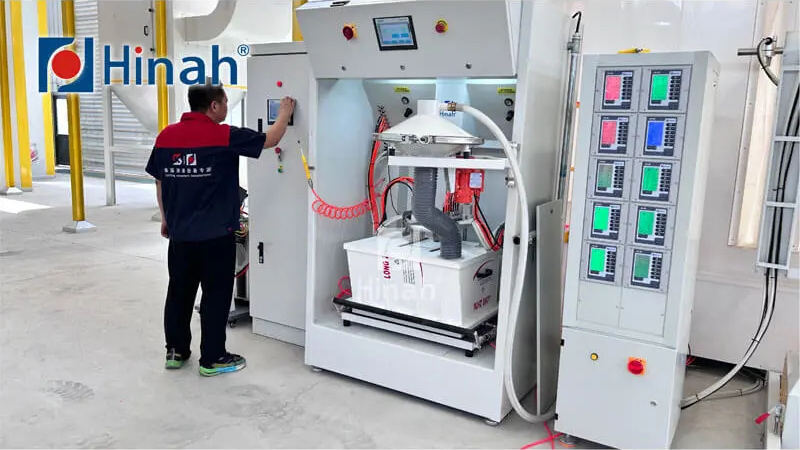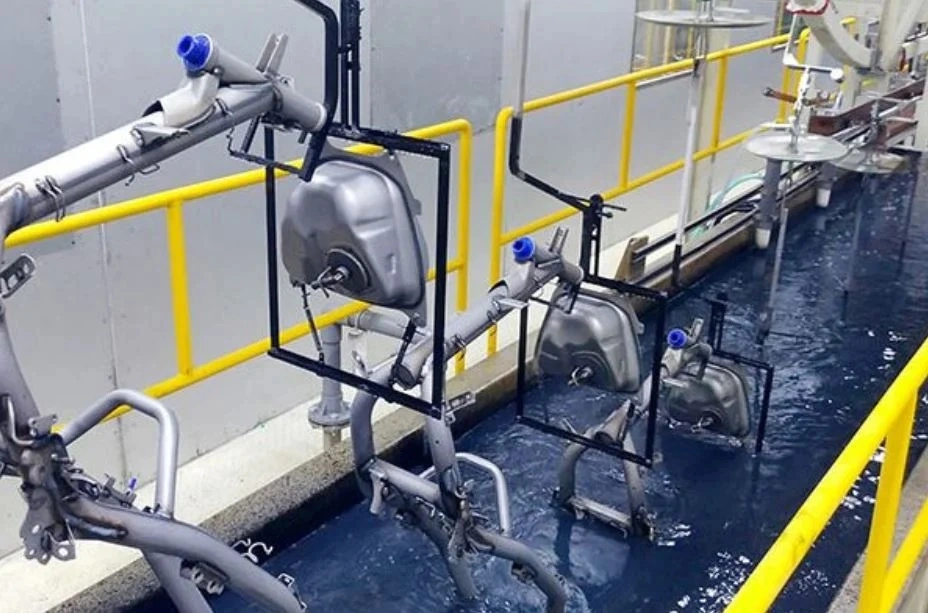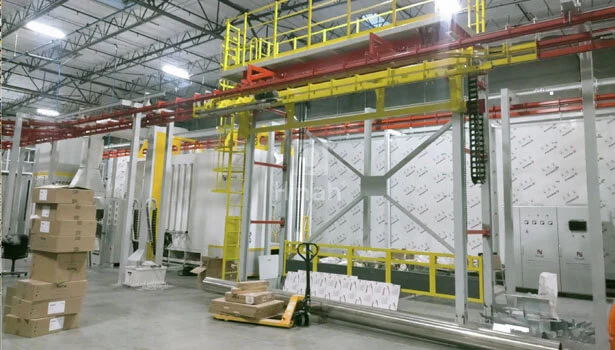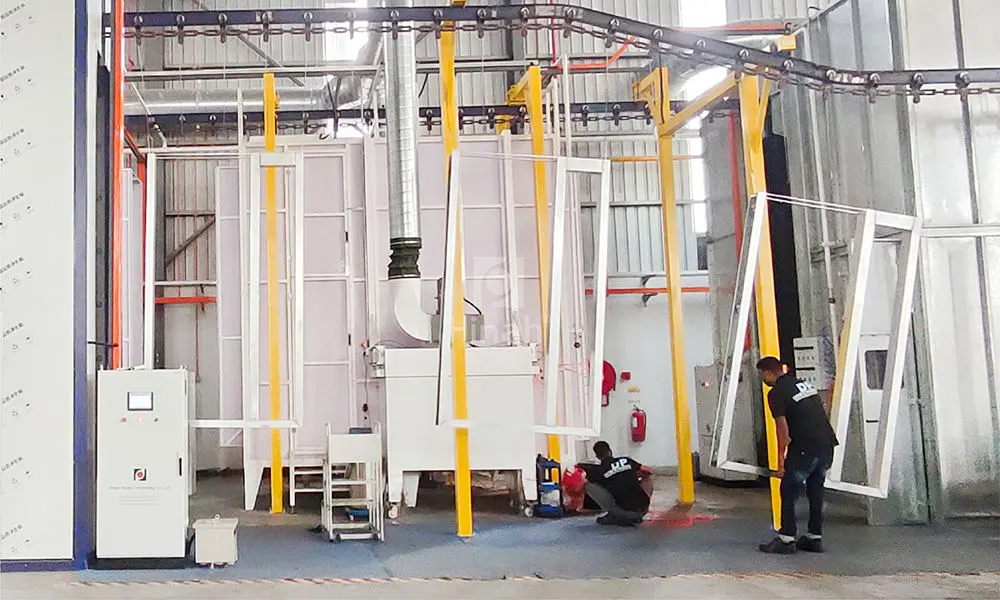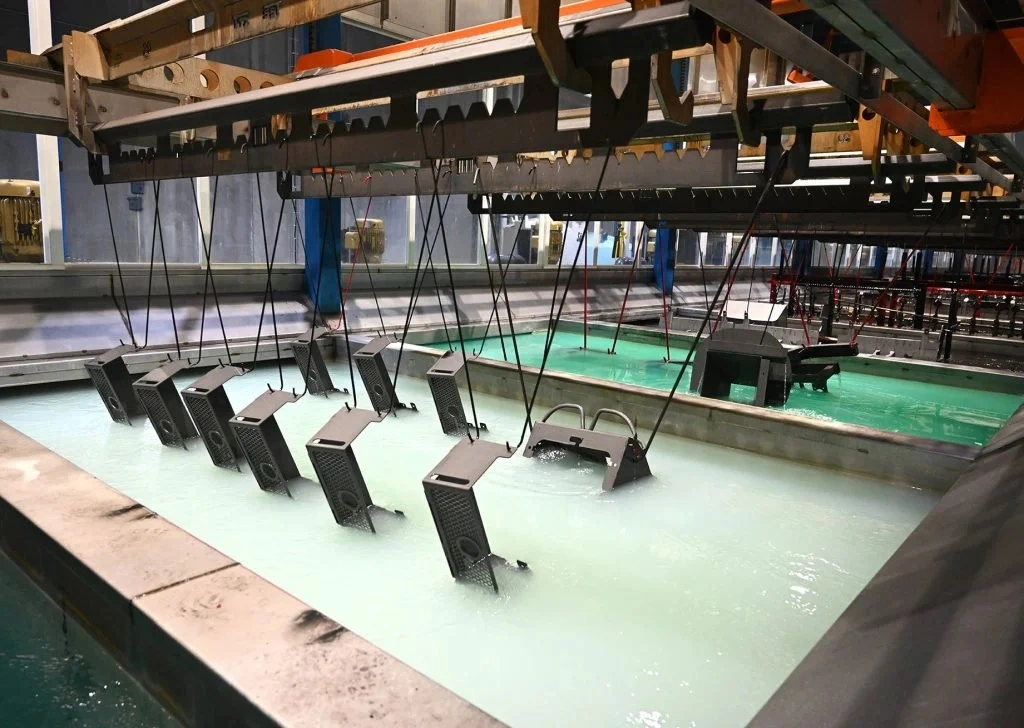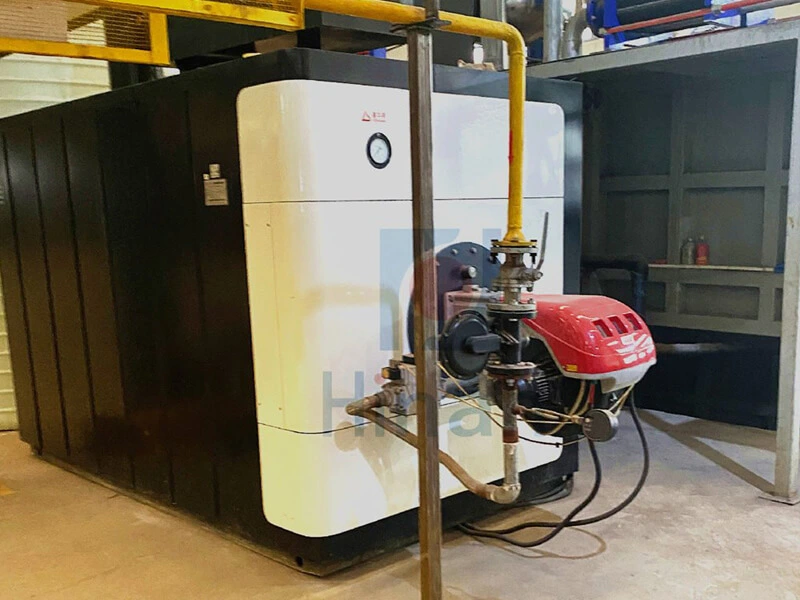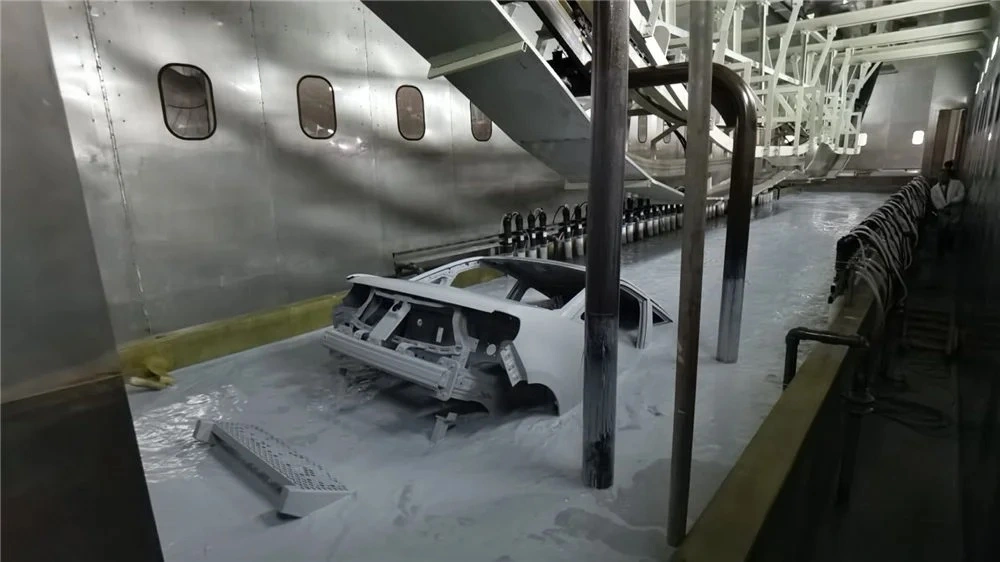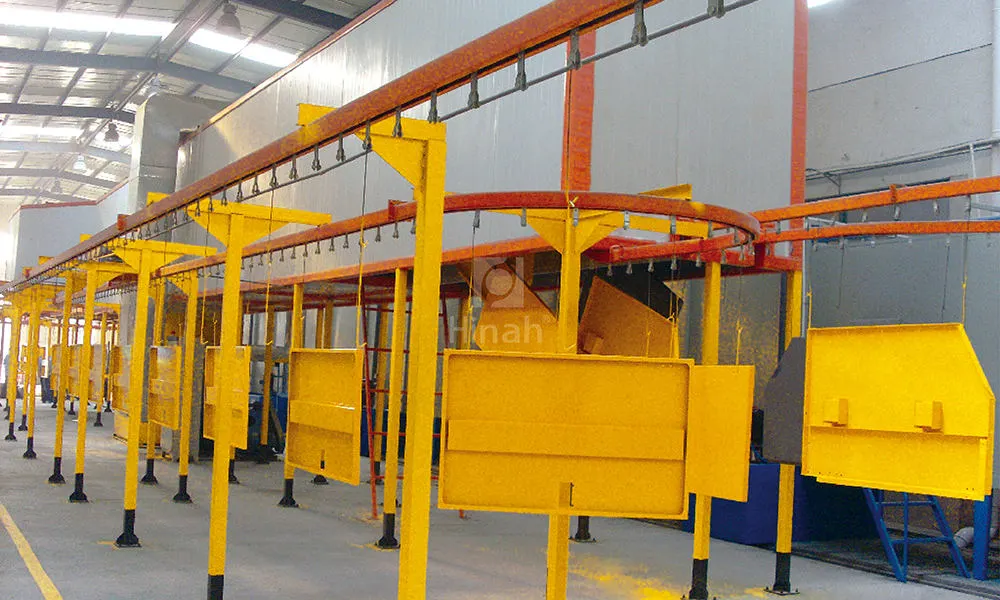When it comes to achieving a durable, high-quality, and aesthetically pleasing finish on metal products, the process is only as good as the equipment behind it. At the heart of this operation lies the powder coating booth oven system, a critical duo that transforms raw metal into a finished product resistant to corrosion, chipping, and fading. This comprehensive overview will delve into the intricacies of these systems, explore the market for powder coating booth and oven for sale, demystify the powder coating booth and oven price structure, and examine the entire process of applying powder coating on metal. We will also break down the powder coating machine cost and look at the various types of integrated powder coating systems available.
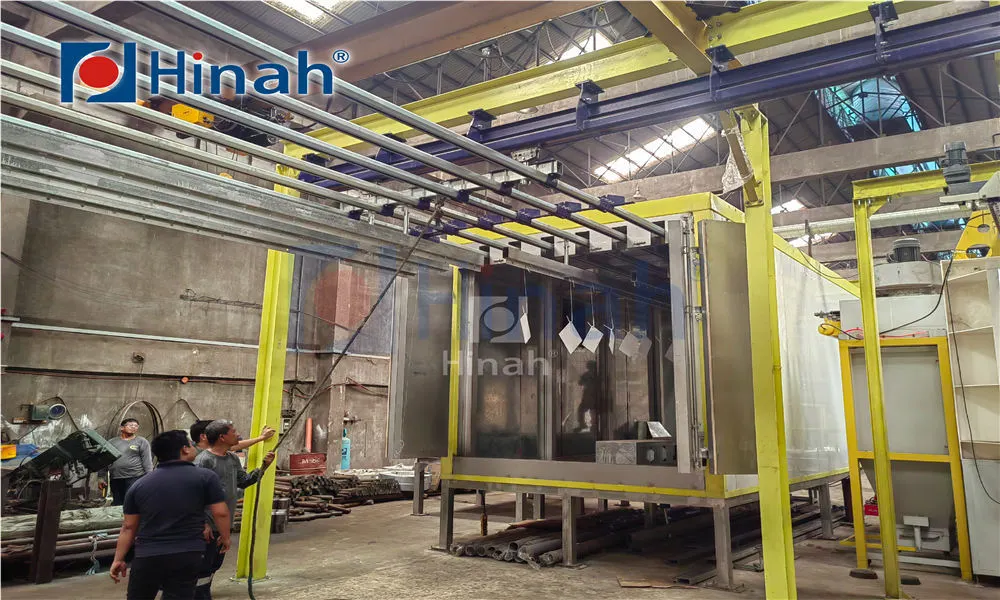
The Essential Duo: Powder Coating Oven and Spray Booth
A complete powder coating line is not a single machine but a coordinated system. The two most vital components are the spray booth and the curing oven. Understanding their individual and combined roles is the first step to grasping the entire process.
The powder coating spray booth is where the magic begins. It is an enclosed or semi-enclosed environment designed to contain the overspray during the application process. It features a ventilation system that pulls air through the booth, carrying unused powder to a recovery system (either a filter or a cyclone for recycling) and ensuring a clean, safe environment for the operator. This containment is crucial for material efficiency and operator safety, preventing the inhalation of fine particles.
The powder coating oven is the second half of this essential partnership. After the powder is electrostatically applied to the grounded metal part, the coated item is transferred to the oven. Here, it is heated to a specific temperature—typically between 300°F and 450°F (150°C and 230°C)—for a set amount of time. This heat causes a chemical reaction called cross-linking, where the powder particles melt, flow, and then cure into a smooth, hard, uniform coating that is much more durable than traditional liquid paint.
Together, the powder coating oven and spray booth" target="_blank">powder coating oven and spray booth form a continuous workflow. The efficiency of this workflow—how parts are moved from the booth to the oven, the pre-treatment process beforehand, and the cooling process after—defines the productivity of the entire operation.
Navigating the Market for a Powder Coating Booth and Oven for Sale
Whether you're setting up a new shop or upgrading existing equipment, finding the right powder coating booth and oven for sale requires careful consideration of your specific needs. The market offers a wide range of options, from small batch ovens and open-face booths for hobbyists or job shops to fully automated, conveyorized powder coating systems for high-volume manufacturers.
Key factors to consider when searching for equipment include:
Volume and Part Size: What is the size of the largest part you need to coat? What is your expected production throughput? This will determine the internal dimensions of both the booth and the oven.
Available Space: Do you have the floor space for a walk-in oven and a large booth, or do you need a smaller, benchtop solution?
Energy Source: Ovens are typically powered by electricity, natural gas, propane, or oil. Your choice will impact the powder coating booth and oven price and long-term operating costs. Gas ovens generally have lower operating costs but higher initial installation expenses.
Type of Powder: Some specialized powders may have specific curing requirements.
Batch vs. Conveyorized: Will you process parts in batches or do you need a continuous flow system with an overhead conveyor?
Suppliers range from large industrial machinery manufacturers to smaller companies specializing in finishing equipment. It's highly recommended to request quotes and specifications from multiple vendors to compare features, quality, and overall value.
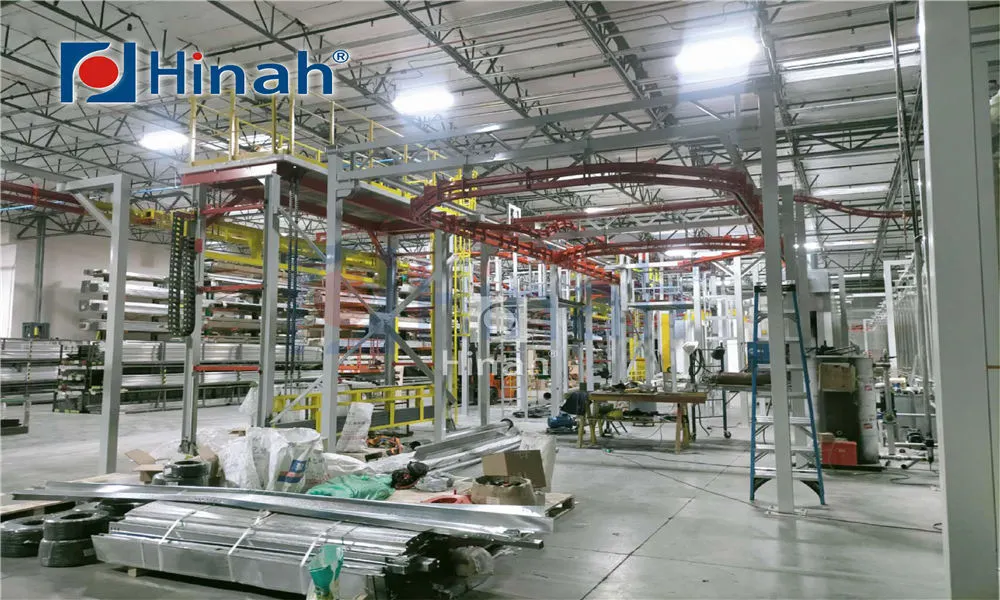
Deciphering the Powder Coating Booth and Oven Price
The powder coating booth and oven price is not a single figure but a variable that depends on a multitude of factors. Understanding what drives the cost will help you budget effectively and make an informed purchase.
Spray Booth Price Factors:
Size and Construction: Larger booths with heavier-gauge steel construction cost more.
Recovery System: A basic booth with disposable filter cartridges is less expensive upfront than one with a cyclone recovery system that allows for high rates of powder reuse. However, a cyclone system can save money on material costs over time.
Features: Additional features like explosion-proof lighting, multiple gun openings, and advanced airflow designs add to the cost.
Curing Oven Price Factors:
Size and Insulation: As with booths, physical size is a primary cost driver. Ovens with superior insulation (e.g., higher R-value mineral wool) are more energy-efficient but have a higher initial powder coating machine cost.
Heat Source: Electric ovens are often cheaper to purchase but more expensive to operate. Gas ovens have a higher upfront cost but lower operating expenses.
Airflow and Heating System: The design of the fan and duct system for even heat distribution impacts performance and price.
Control System: Basic analog controls are standard, but programmable logic controllers (PLCs) with recipe storage for different powders add significant cost and convenience.
A small, simple benchtop oven and an open-face booth for a hobbyist might cost a few thousand dollars. In contrast, a large, automated, high-production powder coating booth oven system with advanced recovery and gas curing can easily run into the tens or even hundreds of thousands of dollars.
The Science and Art of Powder Coating on Metal
The entire purpose of the powder coating booth oven is to facilitate the application of powder coating on metal. This process is prized for its efficiency, durability, and environmental benefits compared to liquid painting.
The process can be broken down into a few key steps:
Pre-treatment: This is arguably the most important step for achieving a quality finish. The metal part must be thoroughly cleaned of all oil, dirt, rust, and mill scale. This is typically done through a multi-stage process involving cleaning, rinsing, and applying a conversion coating (like iron or zinc phosphate) to improve adhesion and corrosion resistance. Any failure in pre-treatment will lead to coating failure.
Application: In the spray booth, the dry powder is electrostatically charged as it is sprayed from a gun. The grounded metal part attracts the charged powder particles, ensuring an even coat and allowing for coverage on edges and complex geometries.
Curing: The part is then moved to the powder coating oven. The heat triggers the powder to melt, flow, and cross-link into its final hardened state. Precise control over time and temperature is critical to achieving the desired physical properties of the coating.
The result is a finish that is highly resistant to impact, moisture, chemicals, and UV light, making it ideal for everything from automotive wheels and household appliances to industrial machinery and outdoor furniture.
Analyzing the Total Powder Coating Machine Cost
When budgeting for a new setup, it's important to look beyond just the powder coating booth and oven price. The total powder coating machine cost encompasses several components:
Spray Booth: As discussed, with or without recovery.
Curing Oven: Sized appropriately for your largest parts.
Powder Spray Gun: Options range from manual guns to automatic reciprocators, with prices varying accordingly.
Compressor: A clean, dry air supply is non-negotiable for proper powder application.
Pre-treatment System: This could be a simple wash tank or a sophisticated multi-stage spray washer.
Material Handling: This includes racks, carts, and potentially an overhead conveyor system.
Installation and Ventilation: Costs for electrical, gas, and exhaust ducting installation can be substantial and are often overlooked.
Spare Parts and Maintenance: Budgeting for replacement filters, heating elements, and other wear items is essential.
A holistic view of the total powder coating machine cost will prevent unexpected expenses and ensure a smooth launch of your finishing operation.
Integrating Components into Cohesive Powder Coating Systems
For maximum efficiency, the individual components—pre-treatment, booth, oven, and handling—are integrated into seamless powder coating systems. These systems can be categorized by their workflow:
Batch Systems: Ideal for low-to-medium volume production or large, bulky items. Parts are processed in batches through each stage. This setup has a lower initial powder coating machine cost and is more flexible for coating different-sized items.
Continuous Systems: Designed for high-volume production of similar-sized parts. An overhead conveyor moves parts continuously through pre-treatment, drying, powder application, and curing in a single, uninterrupted flow. While the powder coating booth and oven price for such a system is high, the productivity gains are immense.
Choosing the right type of system depends entirely on your production goals, product mix, and available capital.
Even with the best equipment, operators can face issues. Here are some common problems encountered in powder coating booth oven operations:
Orange Peel: A wrinkled, textured finish that resembles orange skin. This is often caused by improper film thickness, inadequate curing temperature or time, or poor powder flow.
Poor Adhesion: The coating chips or peels off easily. The root cause is almost always inadequate pre-treatment, leaving contaminants on the metal surface.
Pinholes: Tiny holes in the cured film. These can be caused by outgassing (moisture or gases escaping from the substrate during curing) or contamination on the surface before application.
Inconsistent Curing: Parts may be under-cured (soft, sticky coating) or over-cured (brittle, discolored coating). This highlights the need for precise temperature control and monitoring within the powder coating oven.
Low Transfer Efficiency: Too much powder is going to waste in the recovery system. This can be due to incorrect gun settings, poor gun technique, or inadequate booth airflow.
Understanding these common pitfalls allows operators to troubleshoot effectively, ensuring their powder coating on metal processes yield perfect results every time.
In conclusion, investing in a powder coating booth oven system is a significant decision that requires a deep understanding of the process, the equipment, and the costs involved. By carefully evaluating your needs for a powder coating booth and oven for sale, comprehending the factors that influence the powder coating booth and oven price, and recognizing the importance of integrating all components into efficient powder coating systems, you can build a finishing operation that delivers superior quality, durability, and value.


